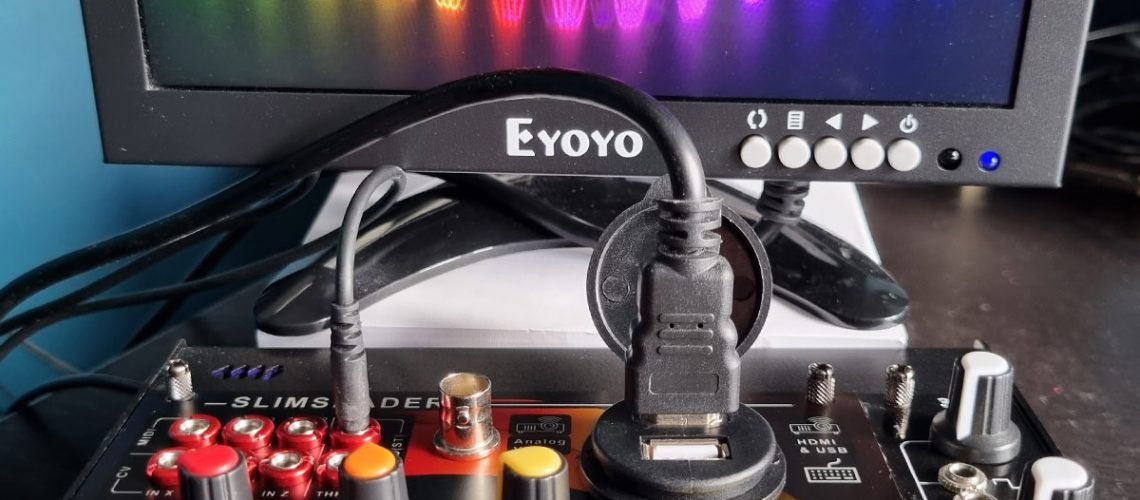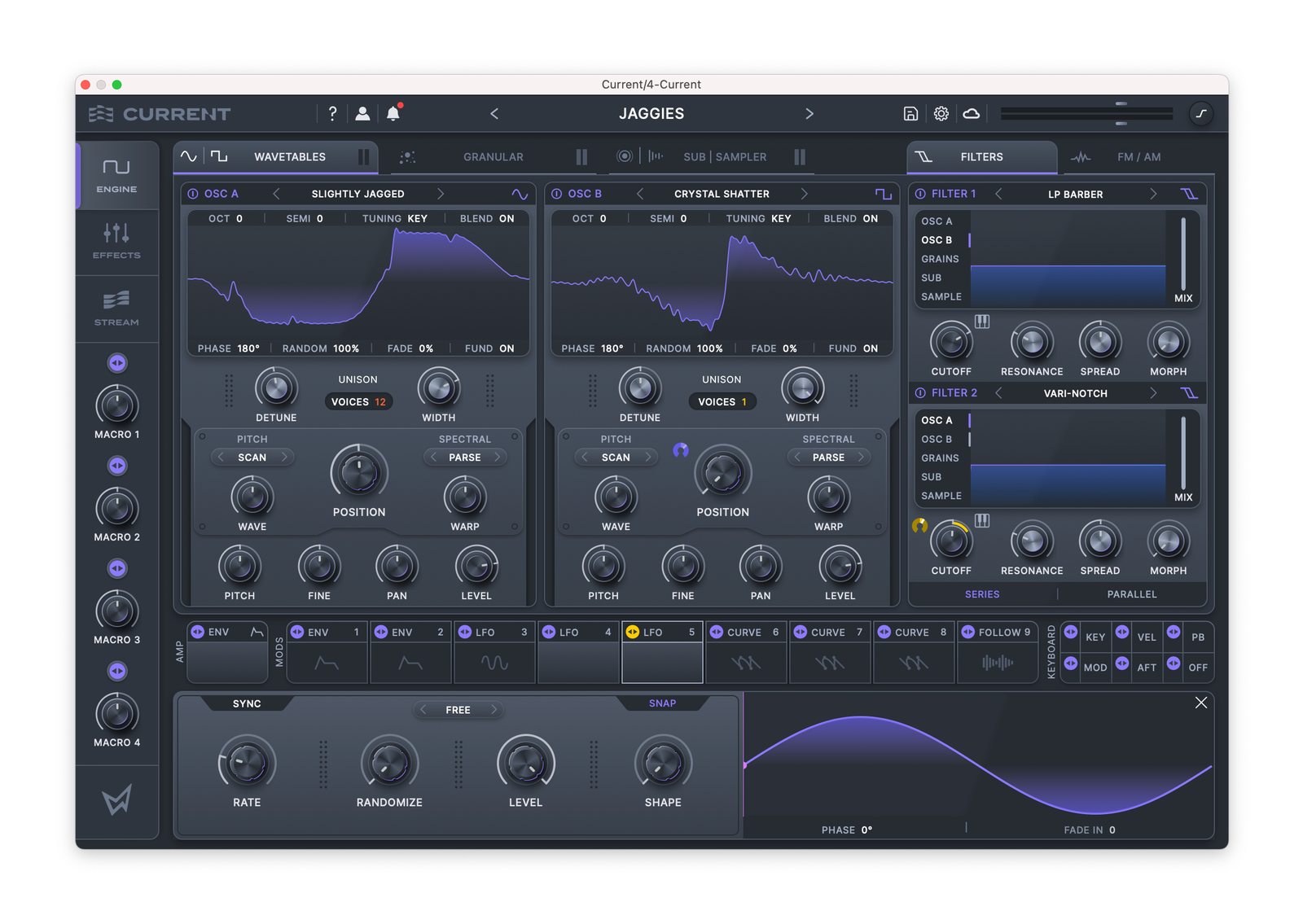Start with visuals made from images or 3D shader code, then wire them up and modulate them in a Eurorack for VJing and jamming. It’s the new open-source Slimshader, built on Raspberry Pi.
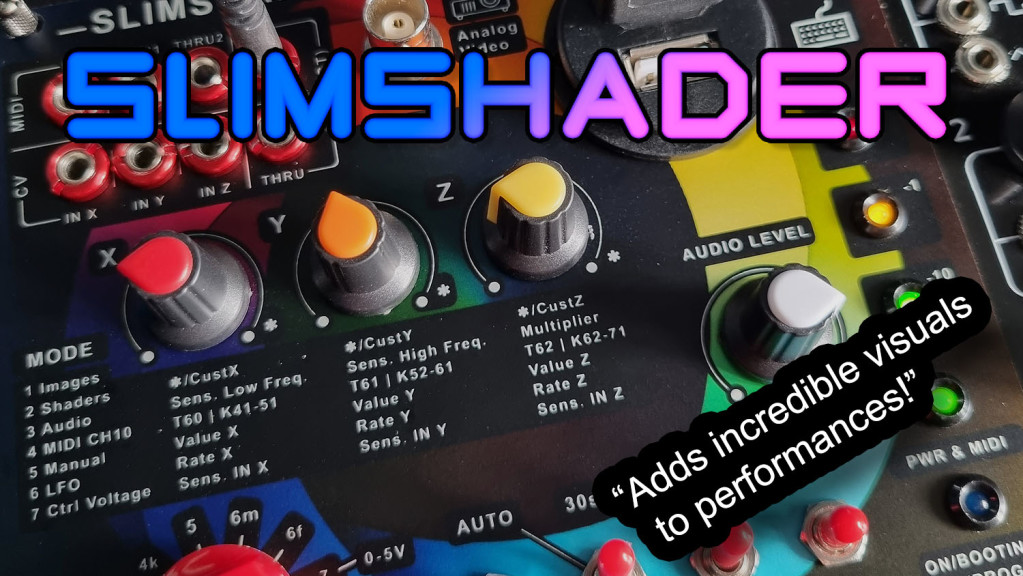
Erik Oostveen’s project has been making some waves this week with this one. Eurorack visuals seem to be making their way gradually from analog-only to digital you can tweak and modulate, much as audio modules have diversified. And – chip shortage, be damned! – you can do some amazing stuff with really inexpensive hardware. (Looking for this, I found a Reddit from ten years ago with someone grumbling that you’d only get cheap visual output with a RasPi core. What a difference a decade makes.)
The visuals may be digital, but modulation is still available analog-style – you’ve got X, Y, and Z knobs to tweak, plus CV connections for the same. If you do want MIDI, those options are available as patch points, too, and there’s a handy USB port onboard. There are also some built-in LFOs so you can modulate even without patching.
The rest of the magic is really down to adding a bunch of cool shaders – and testing them on RasPi’s mobile-style hardware. You do have options of what to stick in there, though – the developer promises compatibility with Raspberry PI Zero W, Zero 2 W and 3b (v1.2).
Since this is RasPi based and open, you could also adapt this to a desktop video jam device or add whatever controls you like using this as a starting point, but the modular functionality sure is nice.
There are a limited number of units available assembled (at least there are small batches popping up via the creator on eBay), but all the documentation is there to build this yourself, including a RasPi image. Check out the full project site:
https://www.erikoostveen.co.uk/Slimshader.html
And GitHub:
https://github.com/ErikOostveen/Slimshader
Of course, where this really gets powerful is once you start adding in your own shader code, via glslViewer OpenGL. (The controls are handled via OSC, too, meaning you could expand what’s there on the panel remotely.) You could also look to www.glslsandbox.com and the text by Patricio Gonzalez Vivo and Jen Lowe that inspired a lot of these examples, The book of shaders.
In addition to software work and visual samples, you’ve got a custom controller board the RasPi can attach to, and of course module faceplate. I can imagine this project could grow over time.
And yeah, check that coax out, too. Other than that, you’ve got HDMI since this is 2022.
Have a look at that panel design – simple but effective:
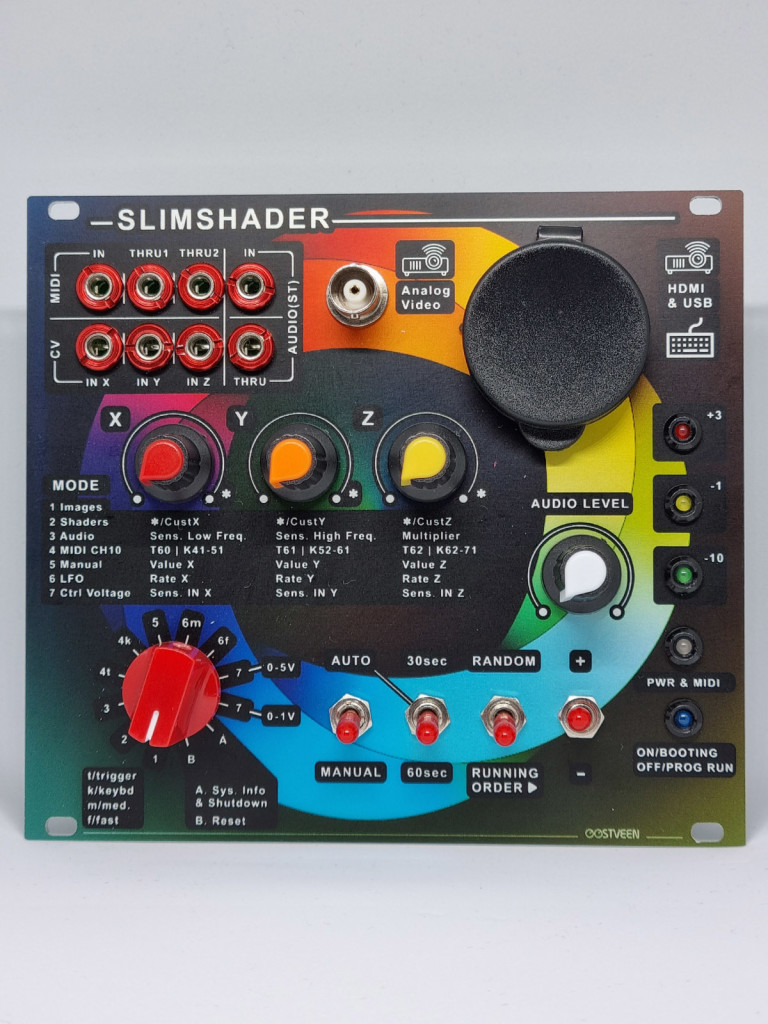
I love the flip-top connections for USB/HDMI:
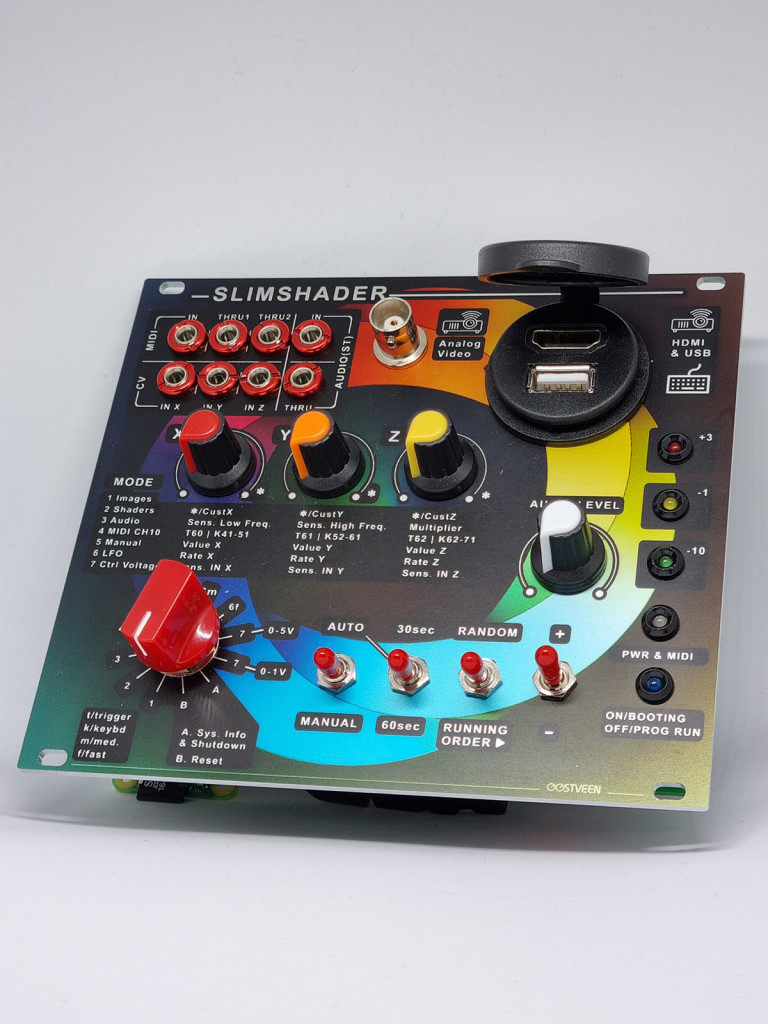
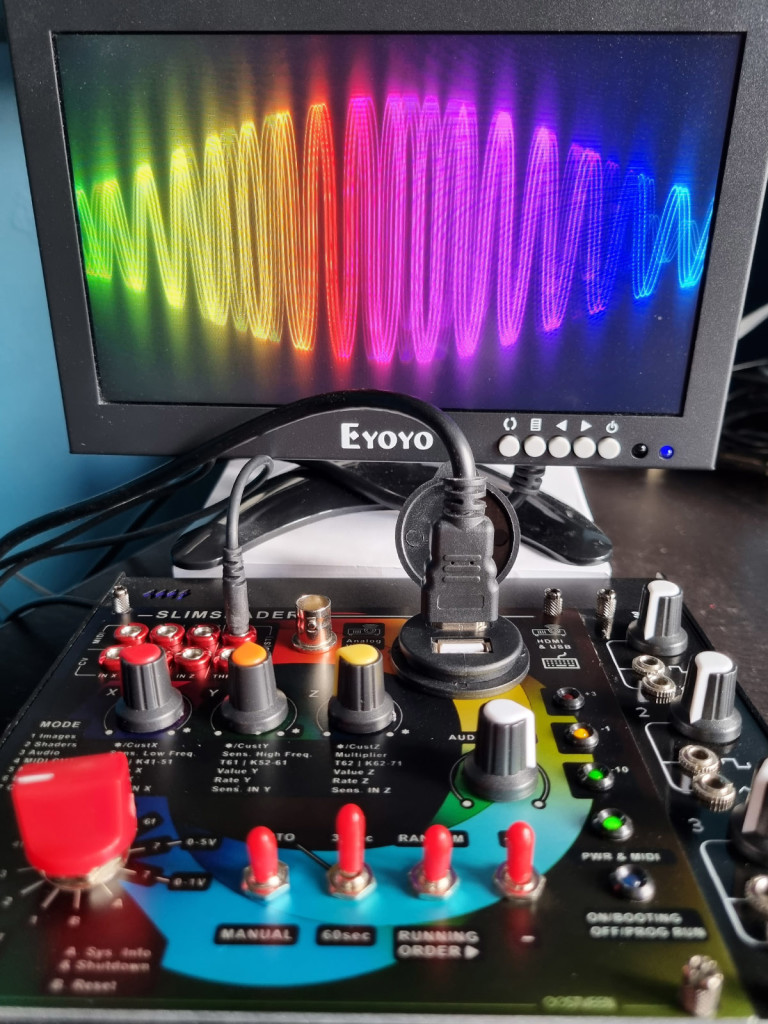
Here it is in action (playlist of jam examples):
On Tom’s Hardware:
https://www.tomshardware.com/news/raspberry-pi-slimshader
Obligatory, since this was probably already stuck in your head. I mean, it is an open source project, so if someone were to make an unauthorized clone without proper credit and licensing, you would want the real Slimshader…
